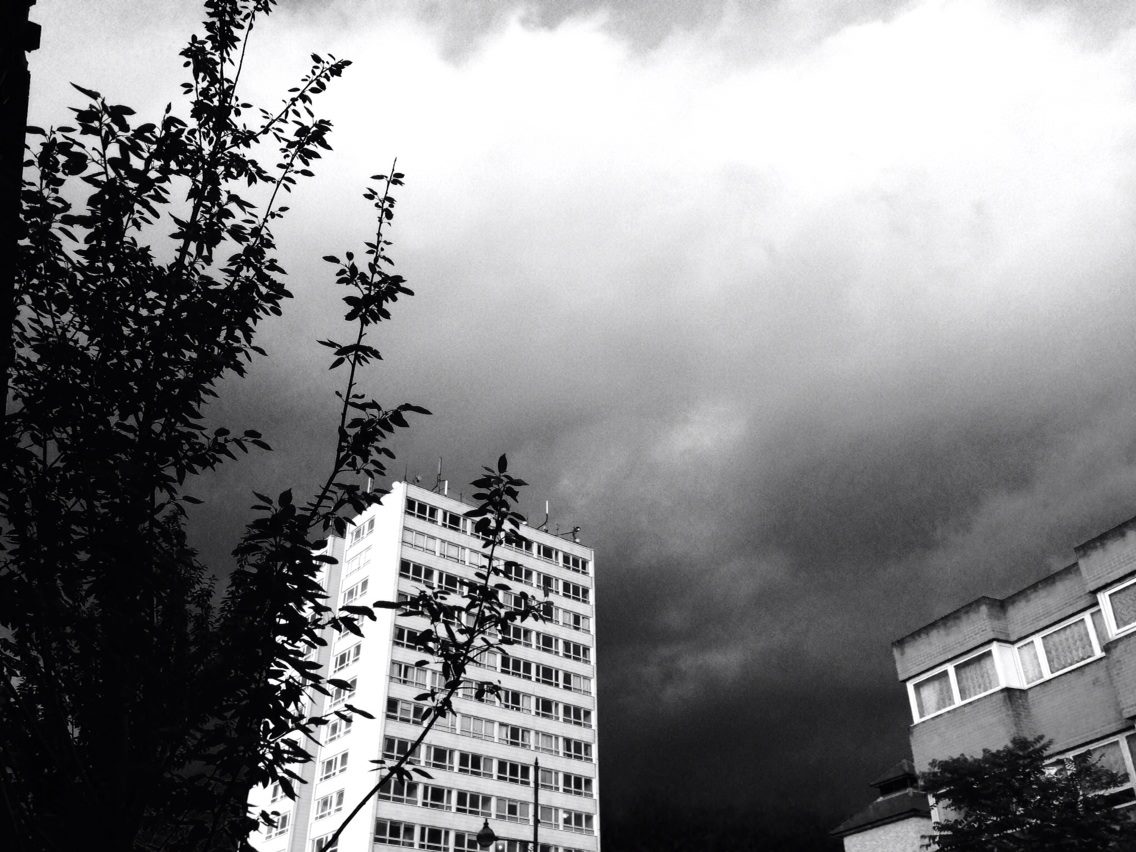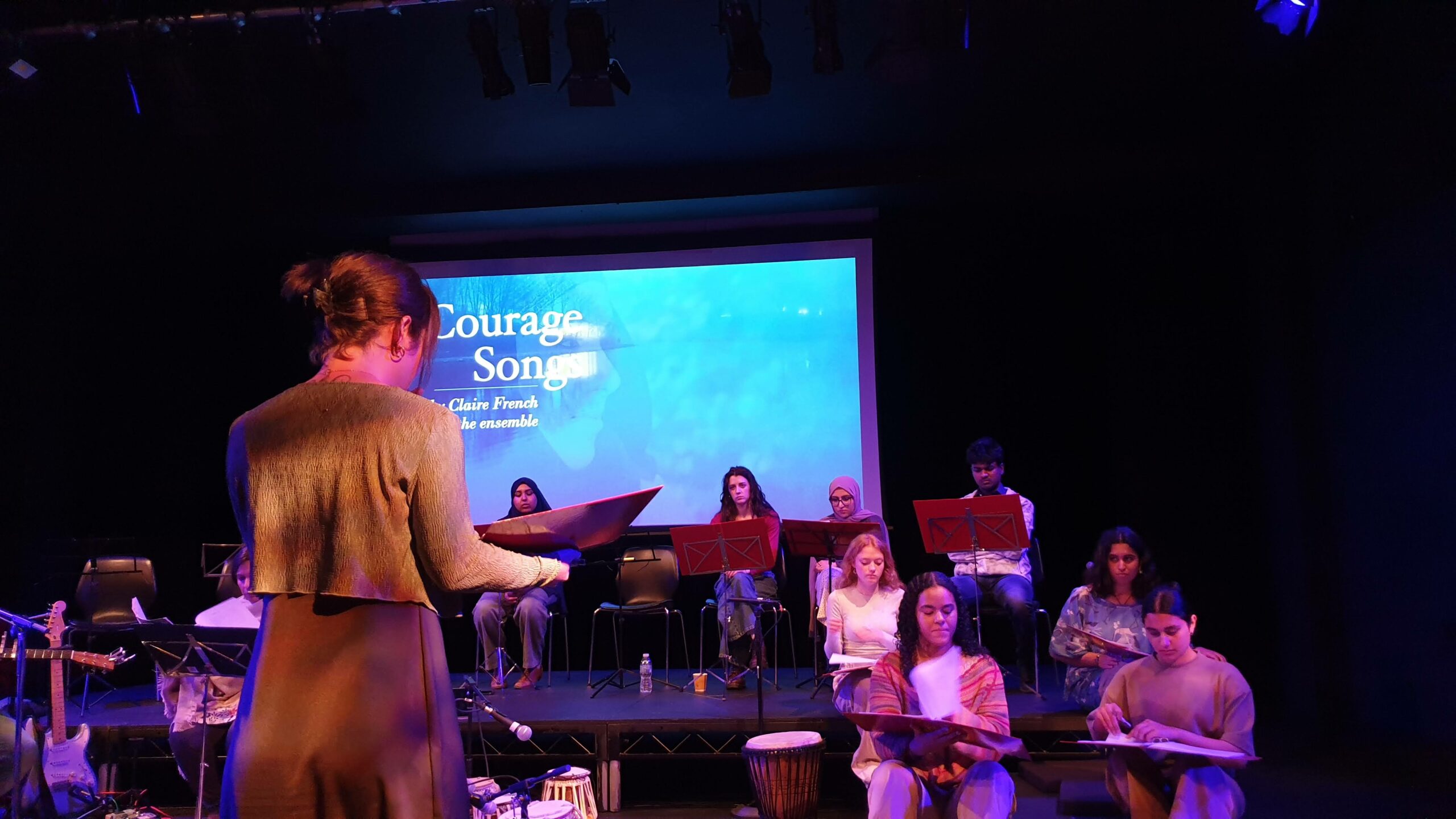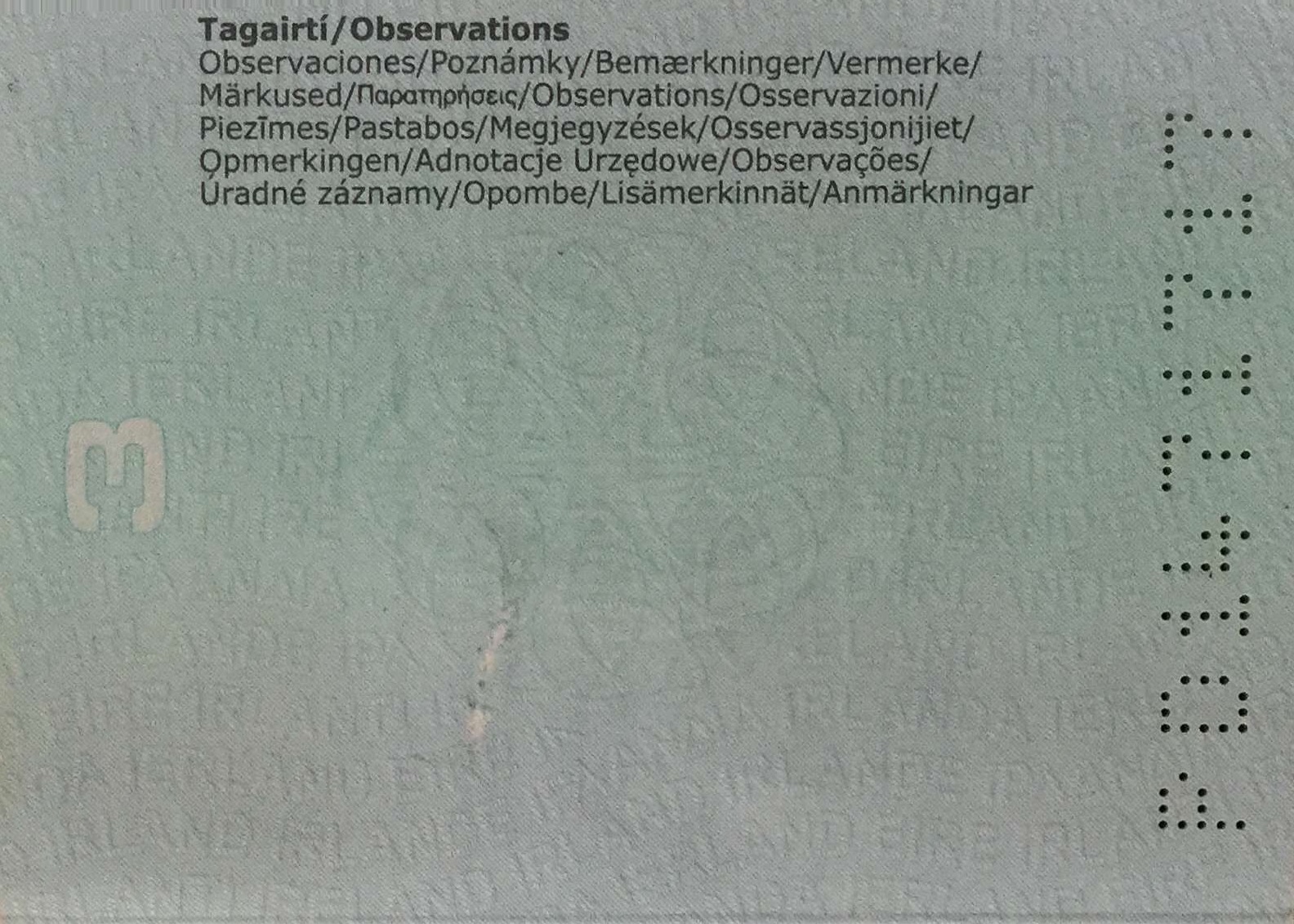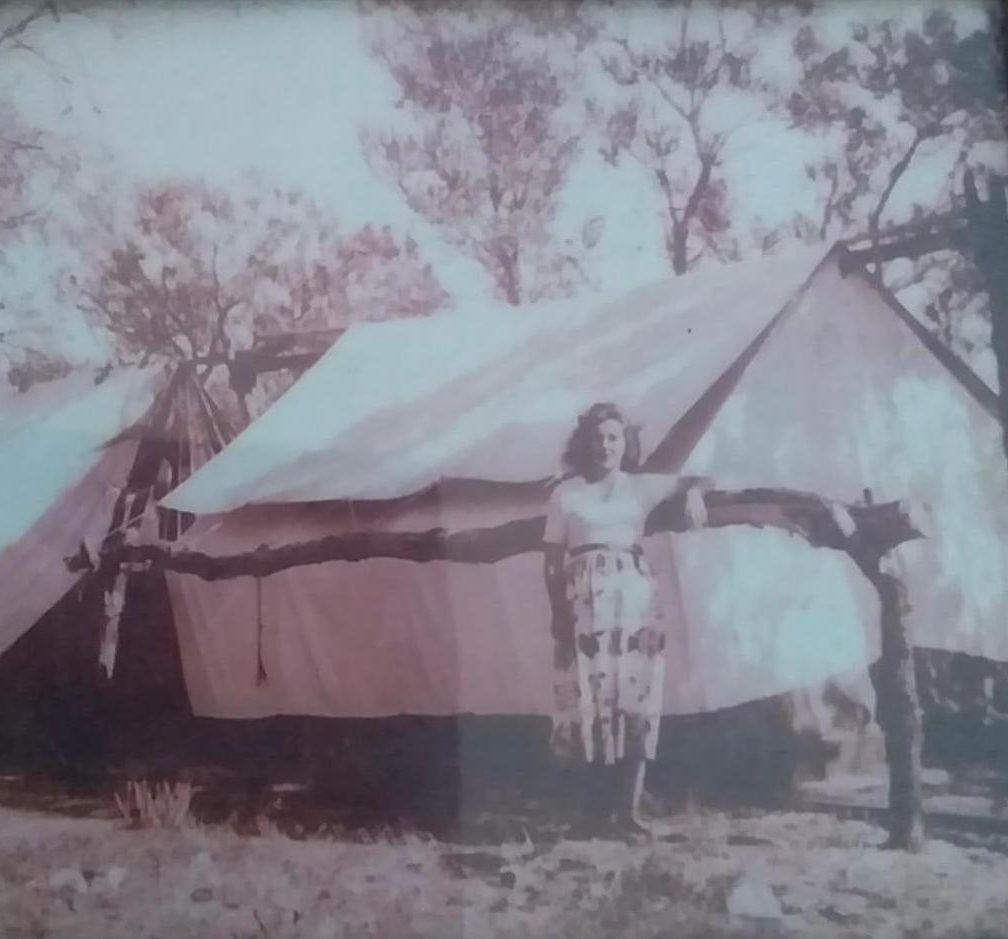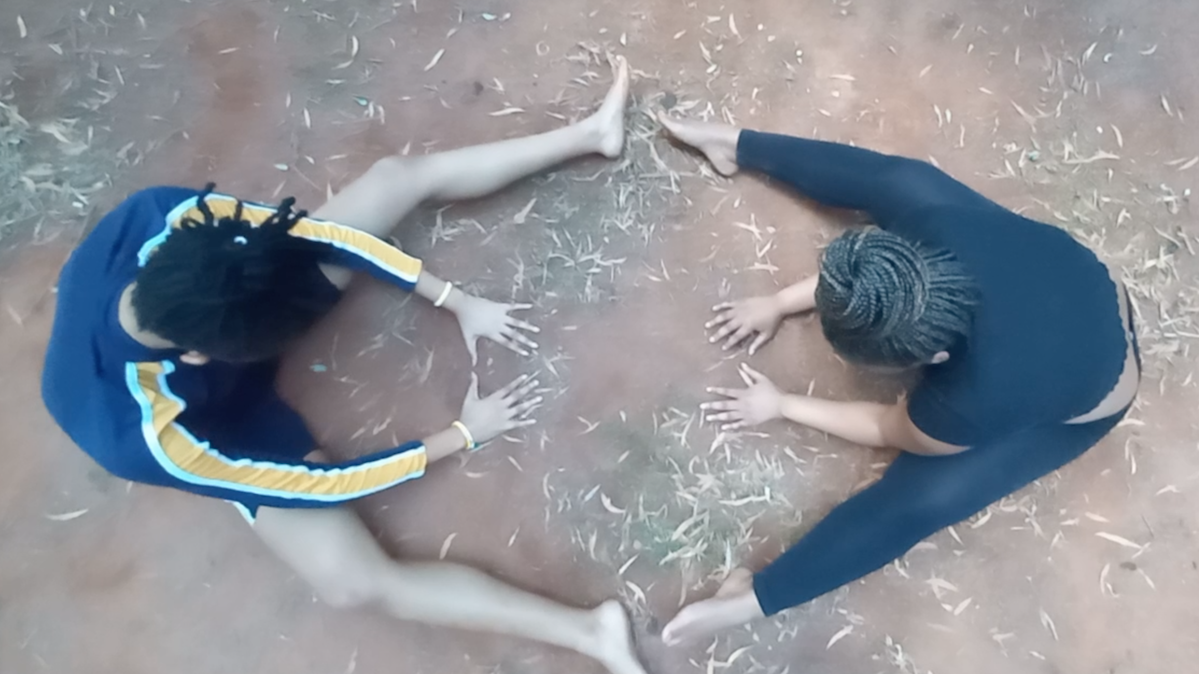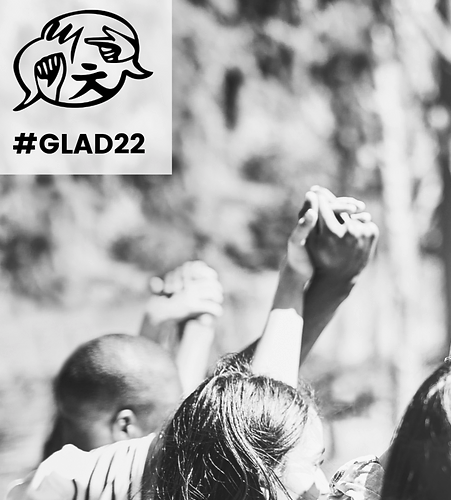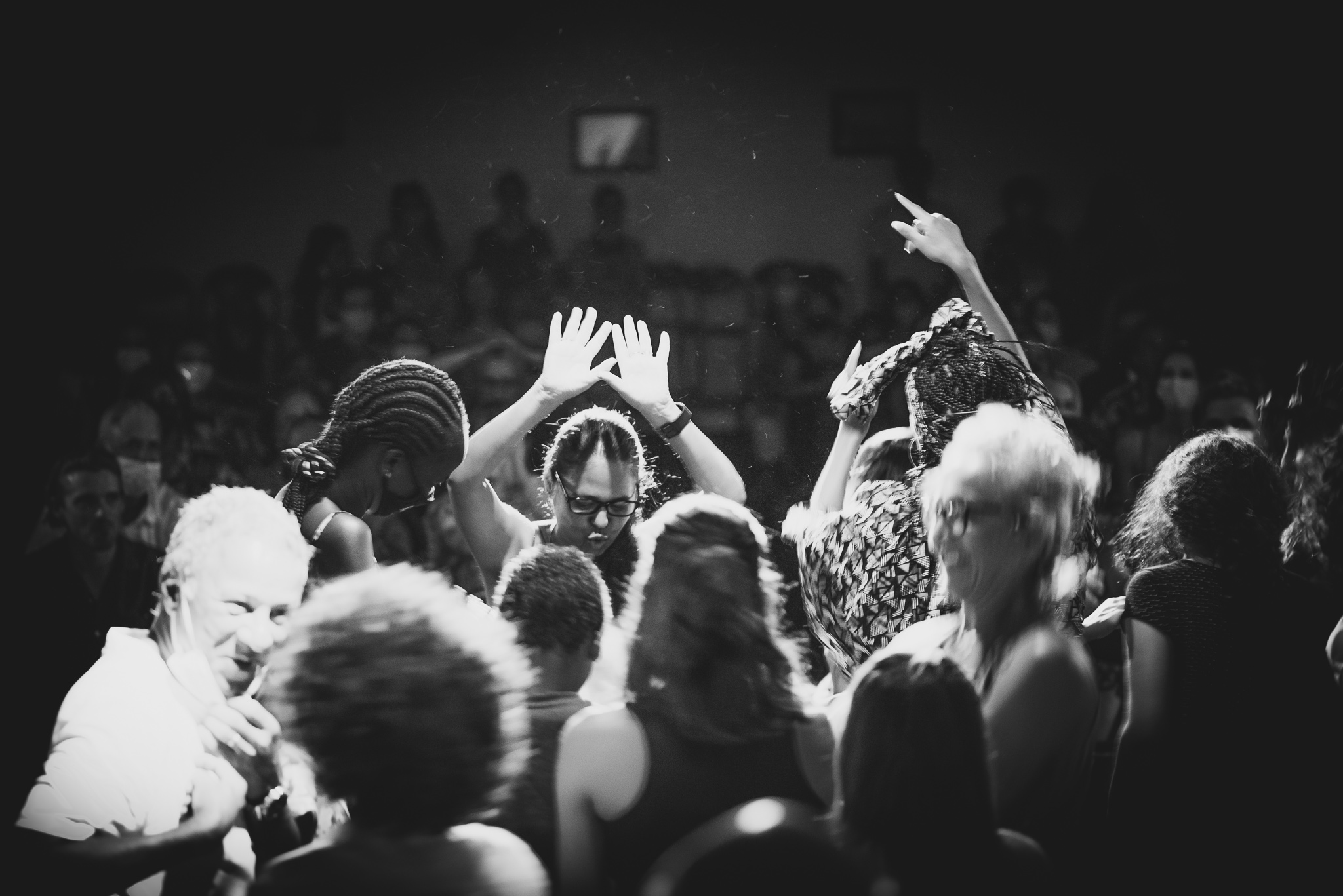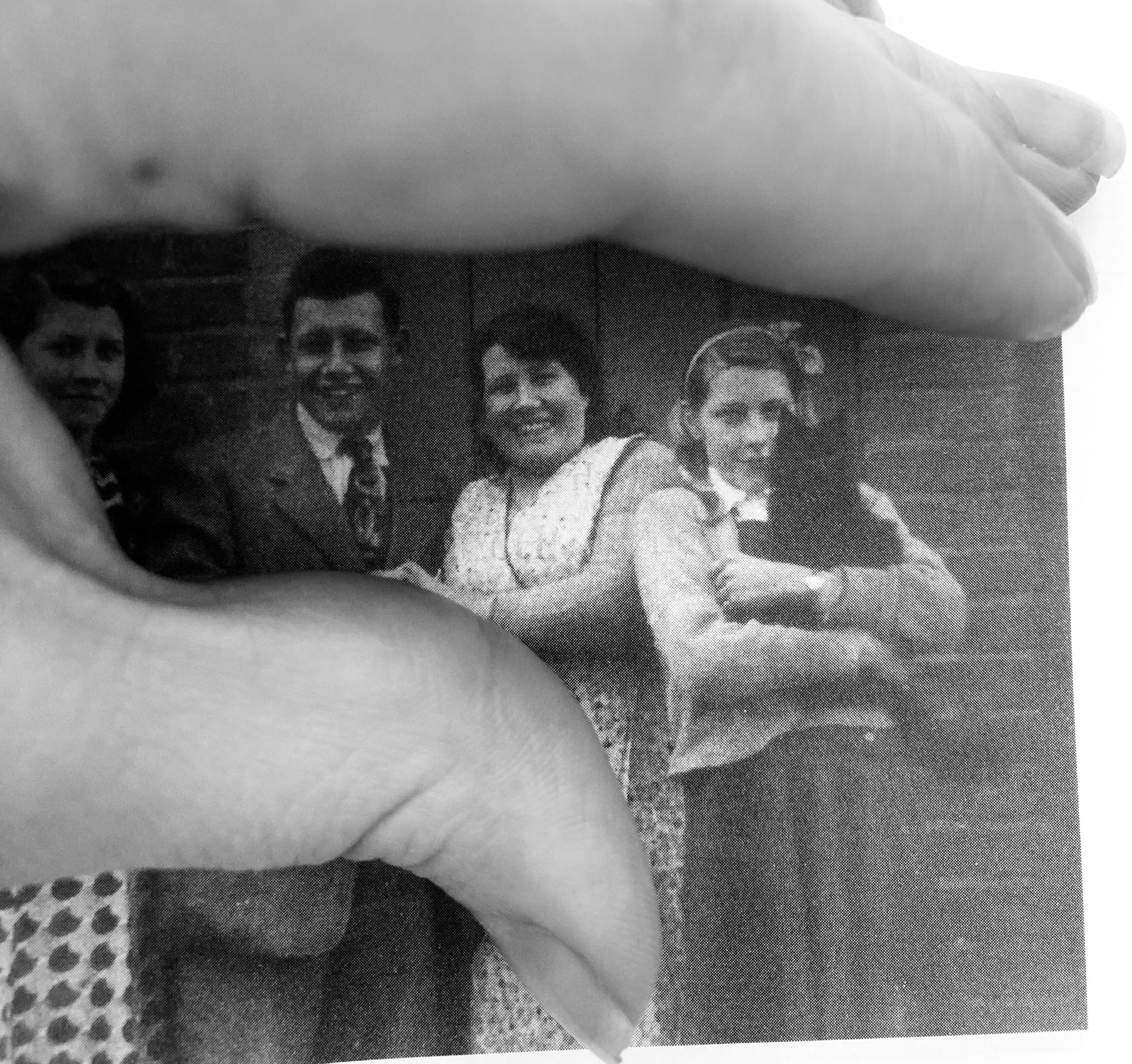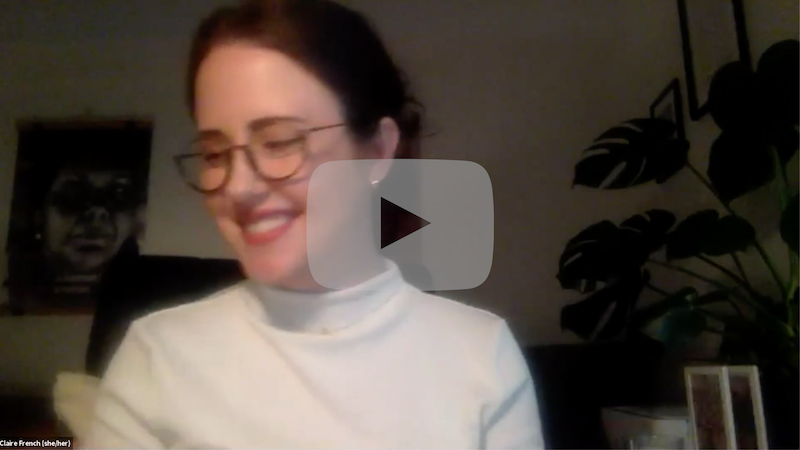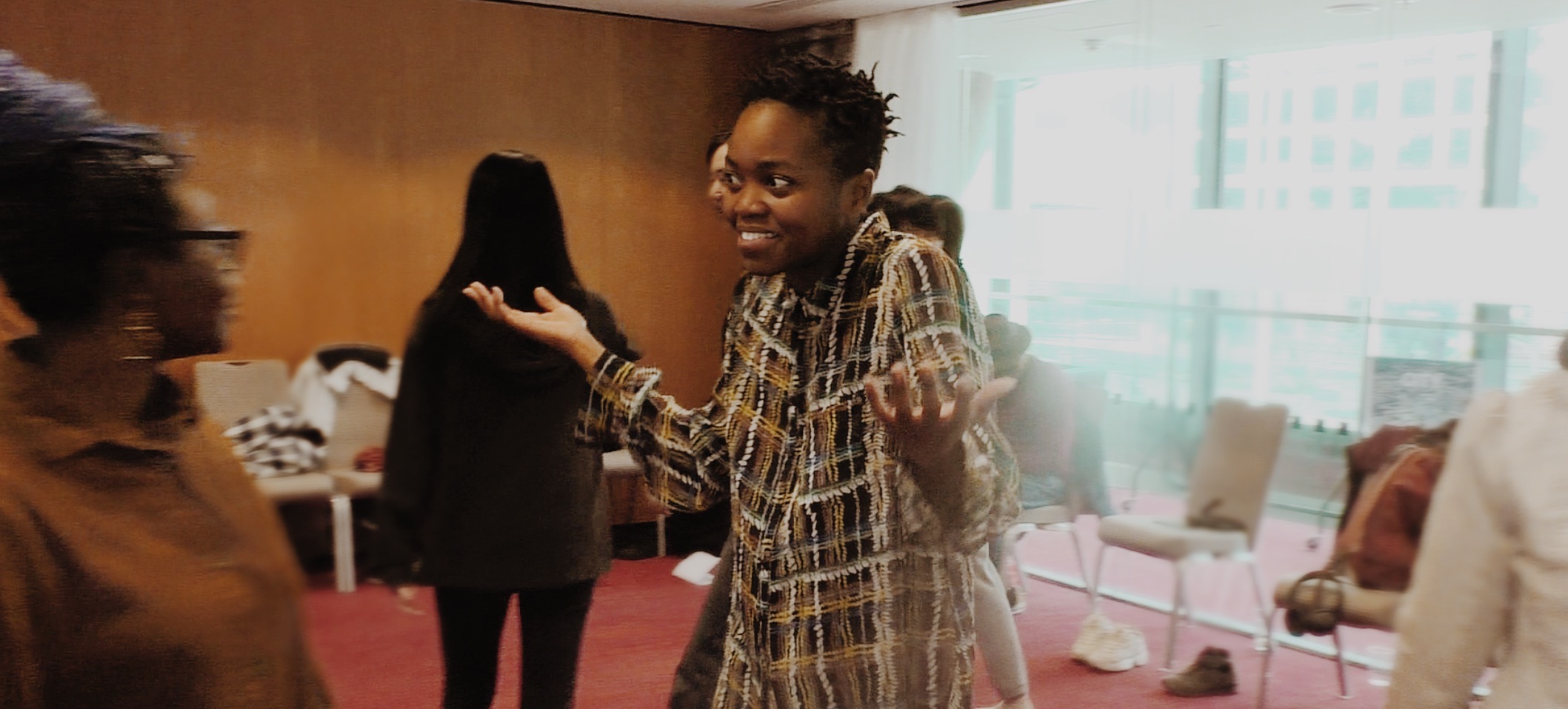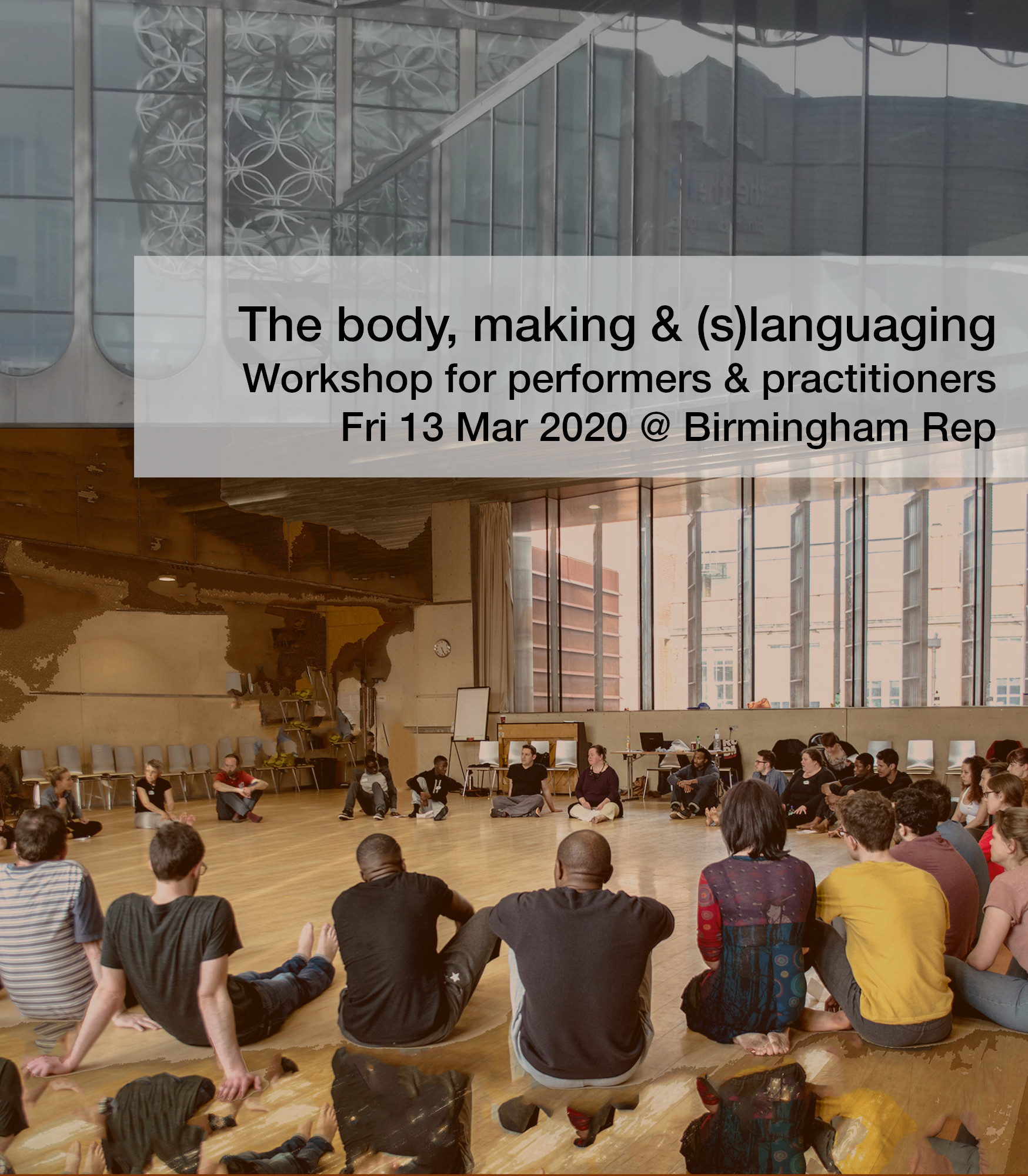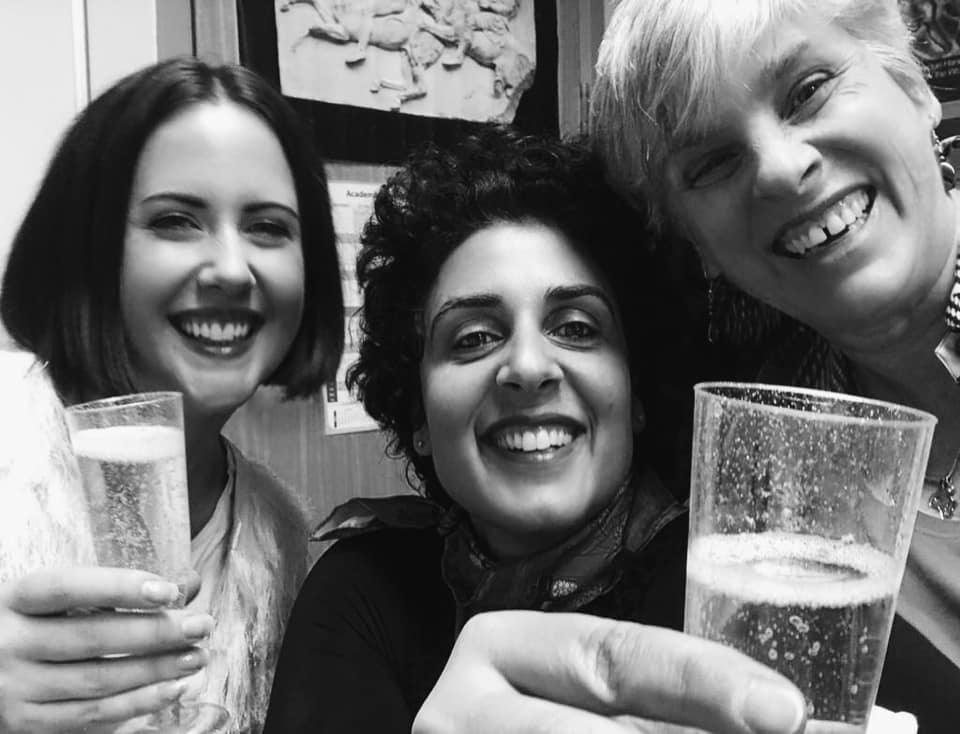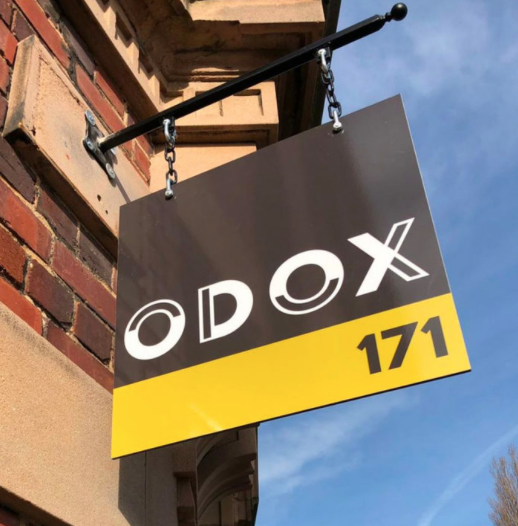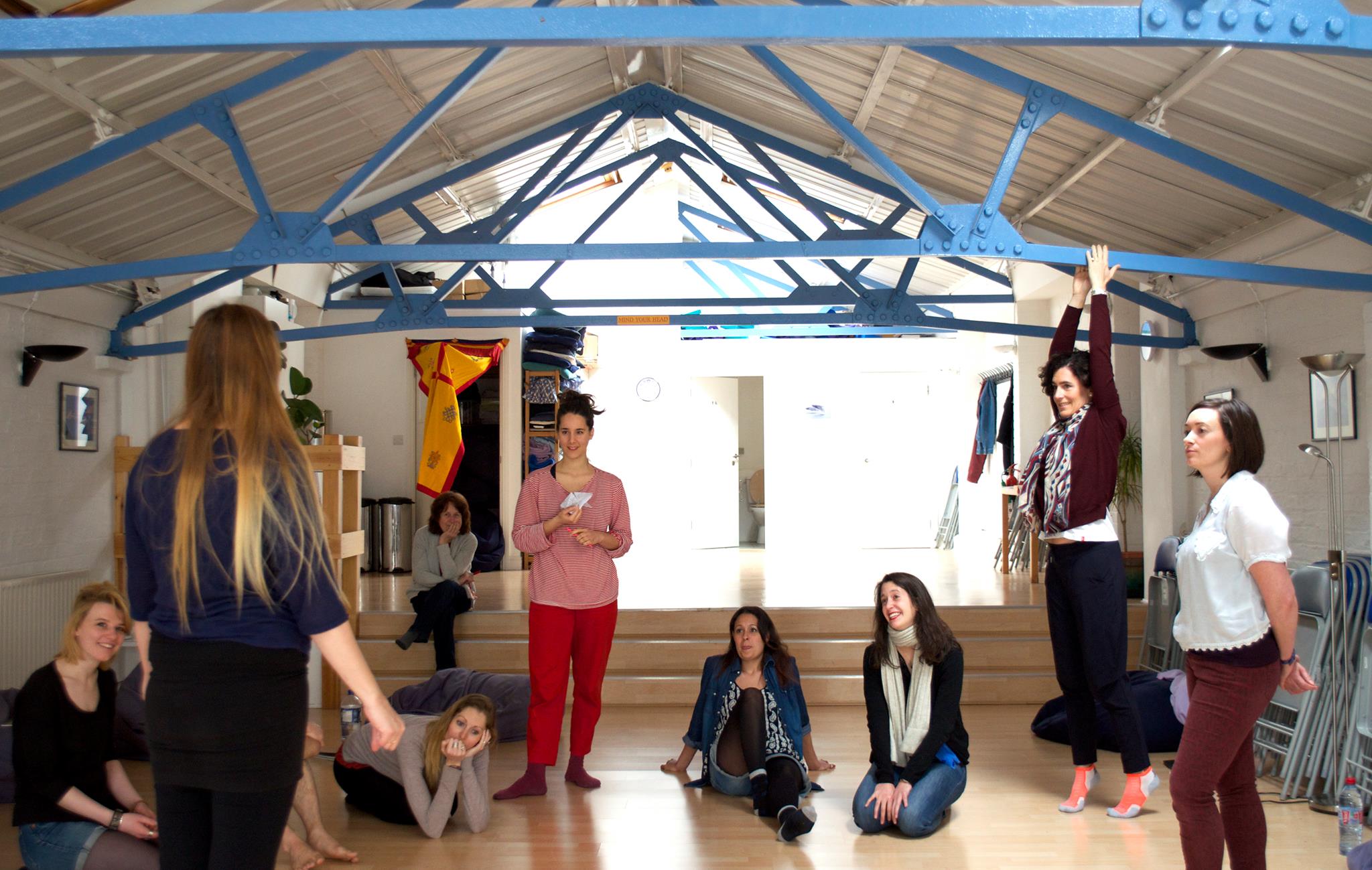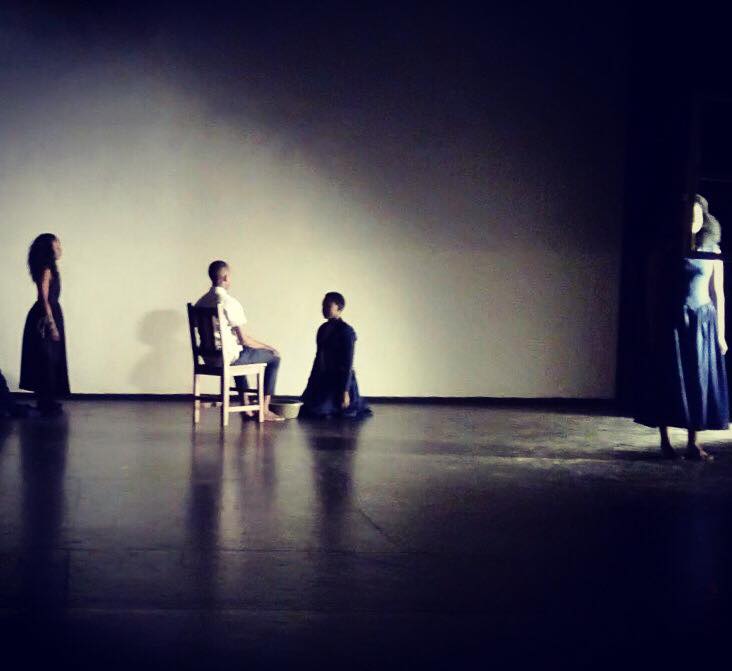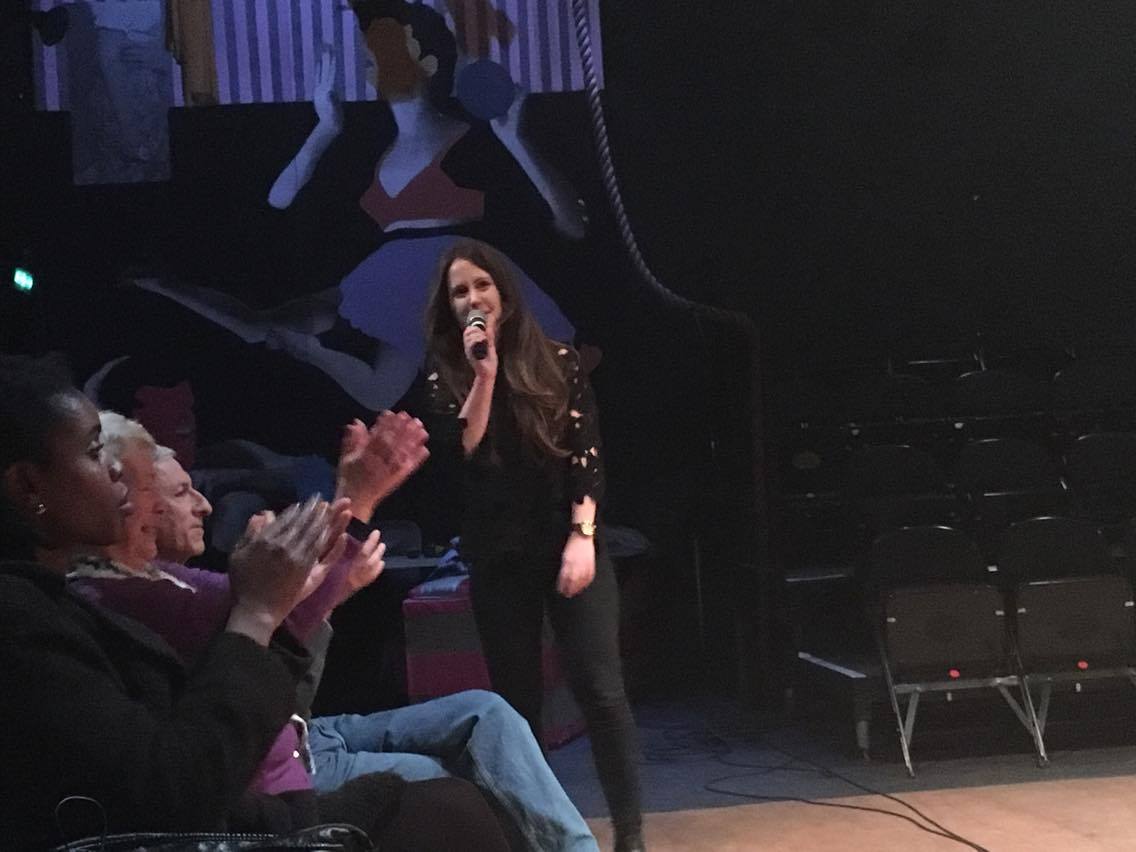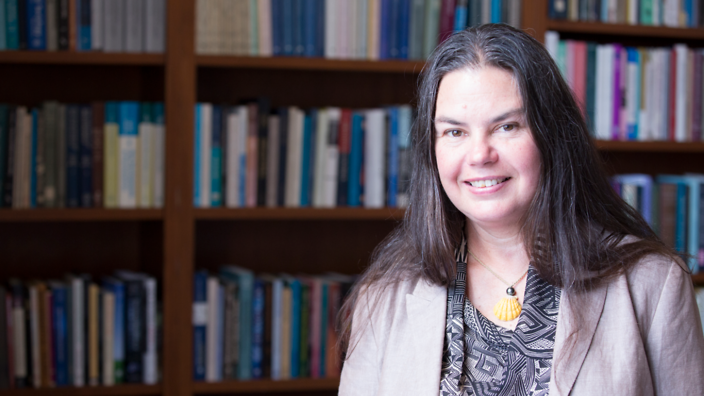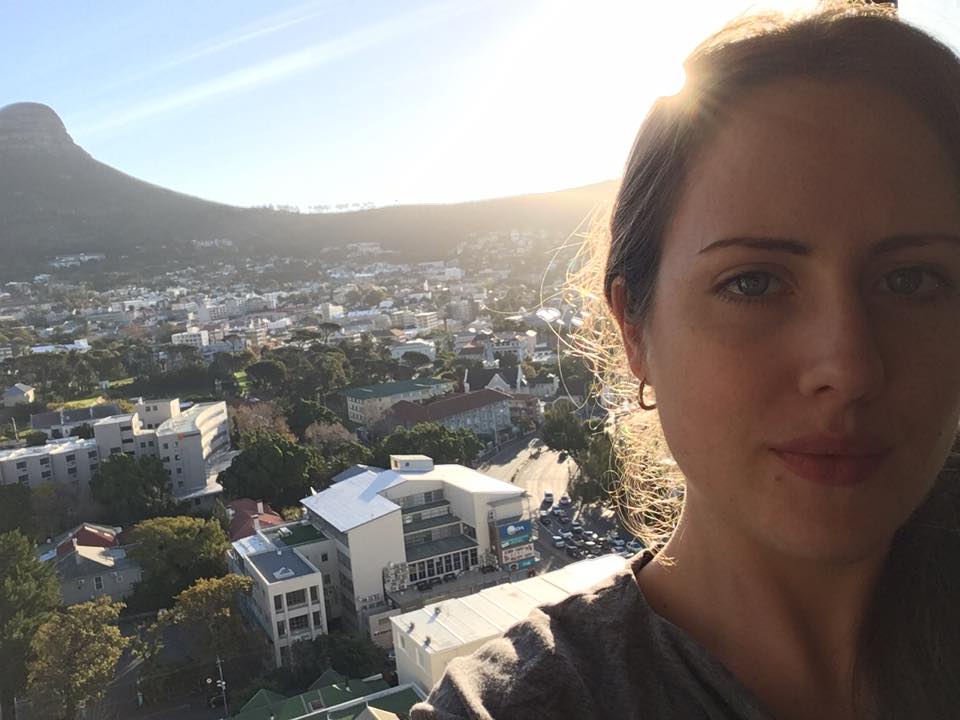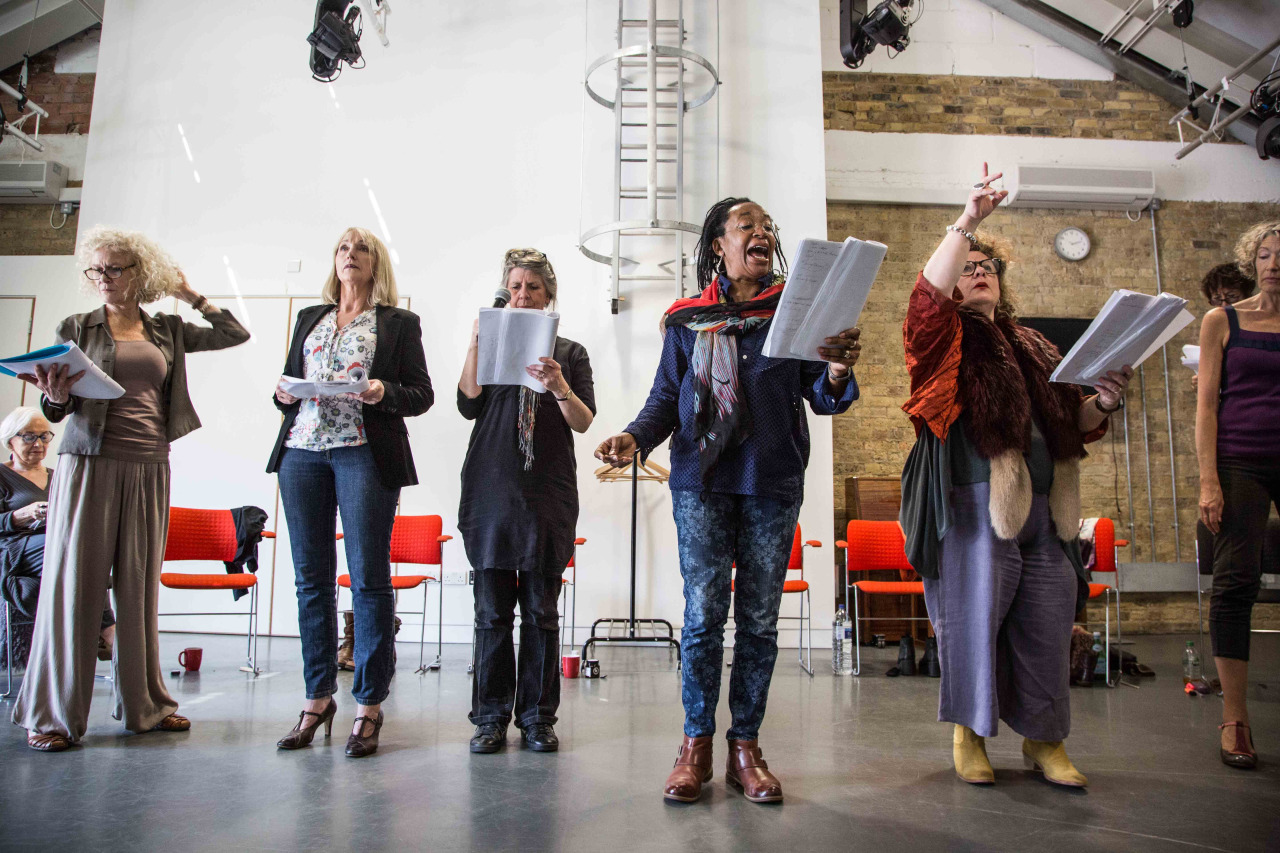Contemporary circus director and scholar Louis Patrick Leroux says, ‘In circus the action is not between bodies, but rather on the body’. The phenomenon of the body as the site of action within circus dramaturgies is currently creating productive tensions in the working practices of circus artists Villads Bugge Bang and Ward Mortier, and director Søs Banke in their development of new work, HUMAN CAN at the Nordisk Teaterlaboratorium (NTL). As a researcher and performance maker documenting a large portion of this process, I want to begin to examine how these circus bodies are forging new working languages at NTL.
The notion of being ‘acted on’ in circus dramaturgies can be illustrated by a moment in rehearsals, where I noted,
Performers follow a set rhythm by taking turns flicking and slapping their chest, arms and thighs. They pummel their bodies to this rhythm, looking for variations in their physicalisation. Their body both asks and answers: What will this part of my body sound like when coming into contact with my hand?
Camilla Damkjær proposes the ‘organism, signification, and subject—are particularly intermingled in circus’, yet, in this moment between the performers, there seemed to be less room for signification. Performers are of course aware of the signifying potential for the rhythmic organisation, and their various physical capabilities while cohering to set rhythms. They also build the sequence together knowing about its visual cohesion and suspense as rhythms accumulate complexity and speed. But first and foremost, they were bodies hitting and being hit.
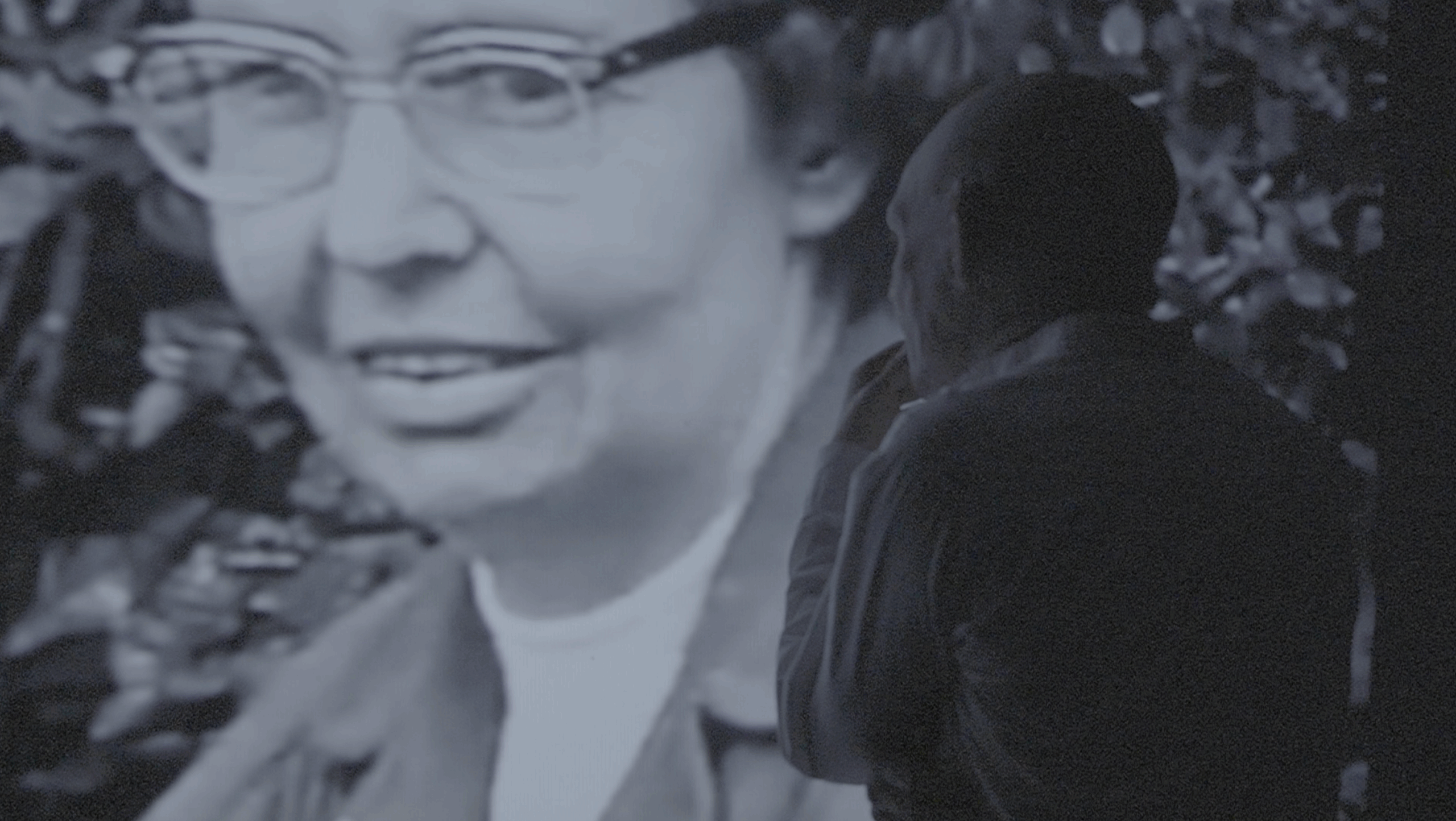
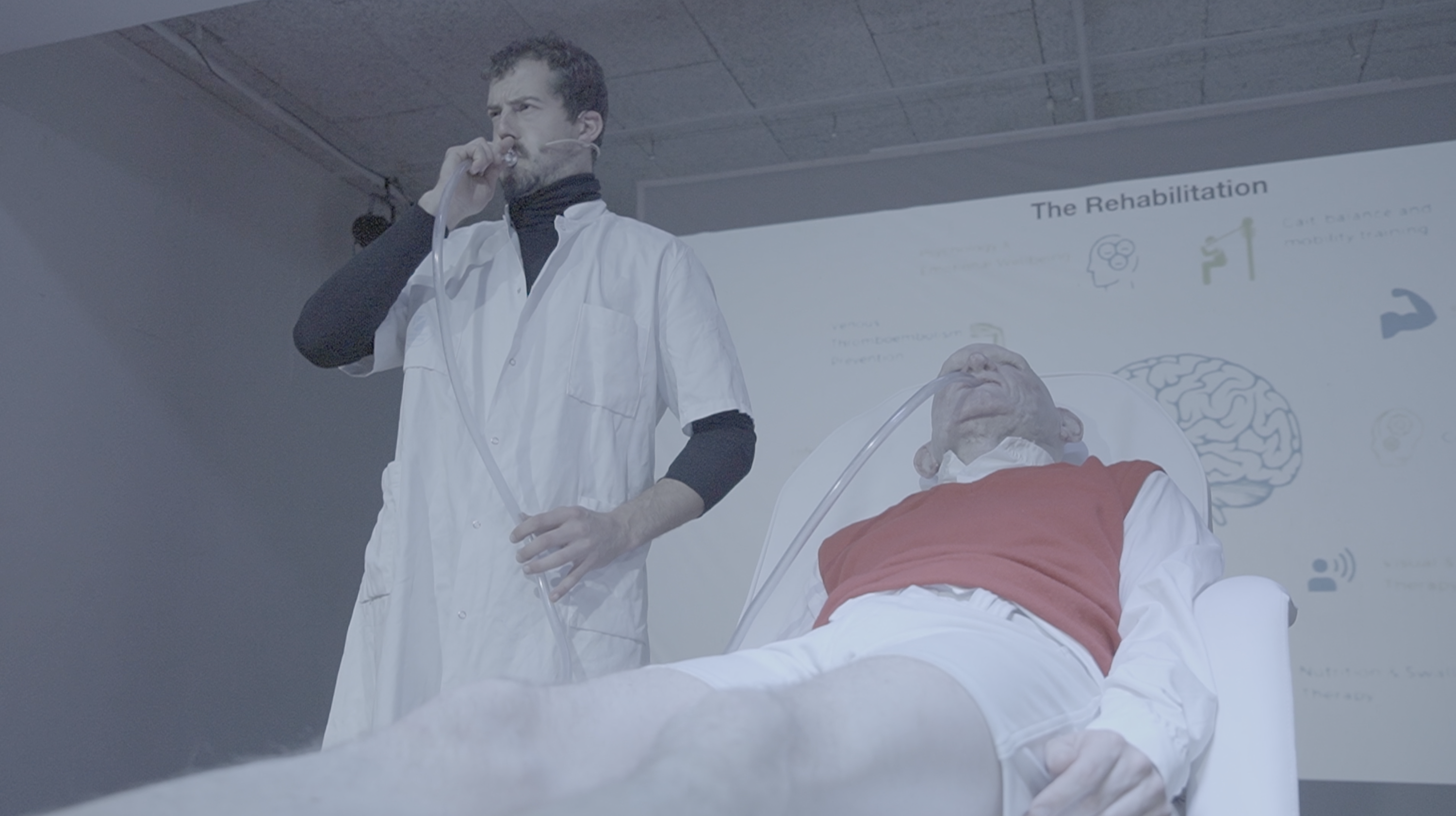
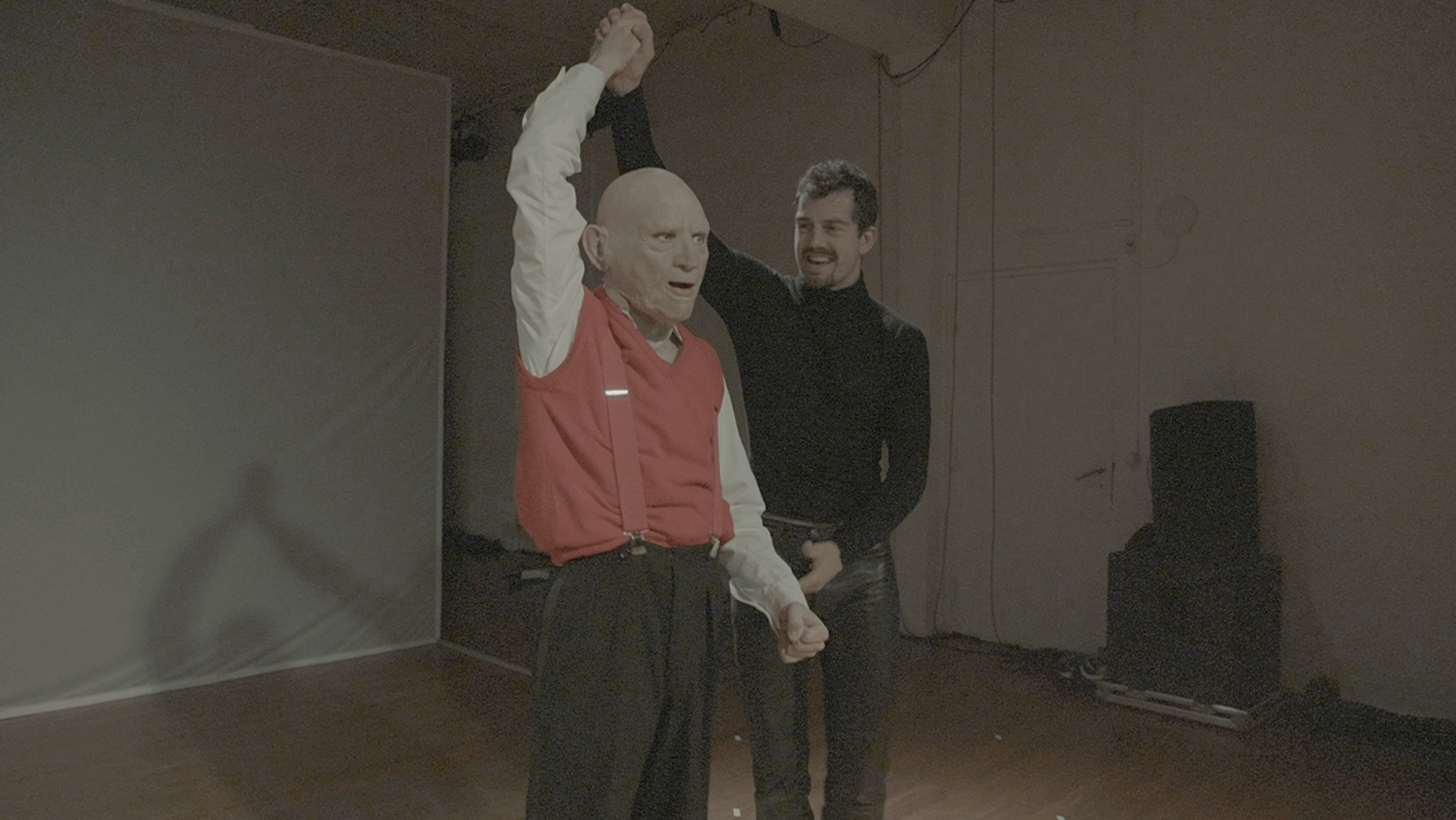
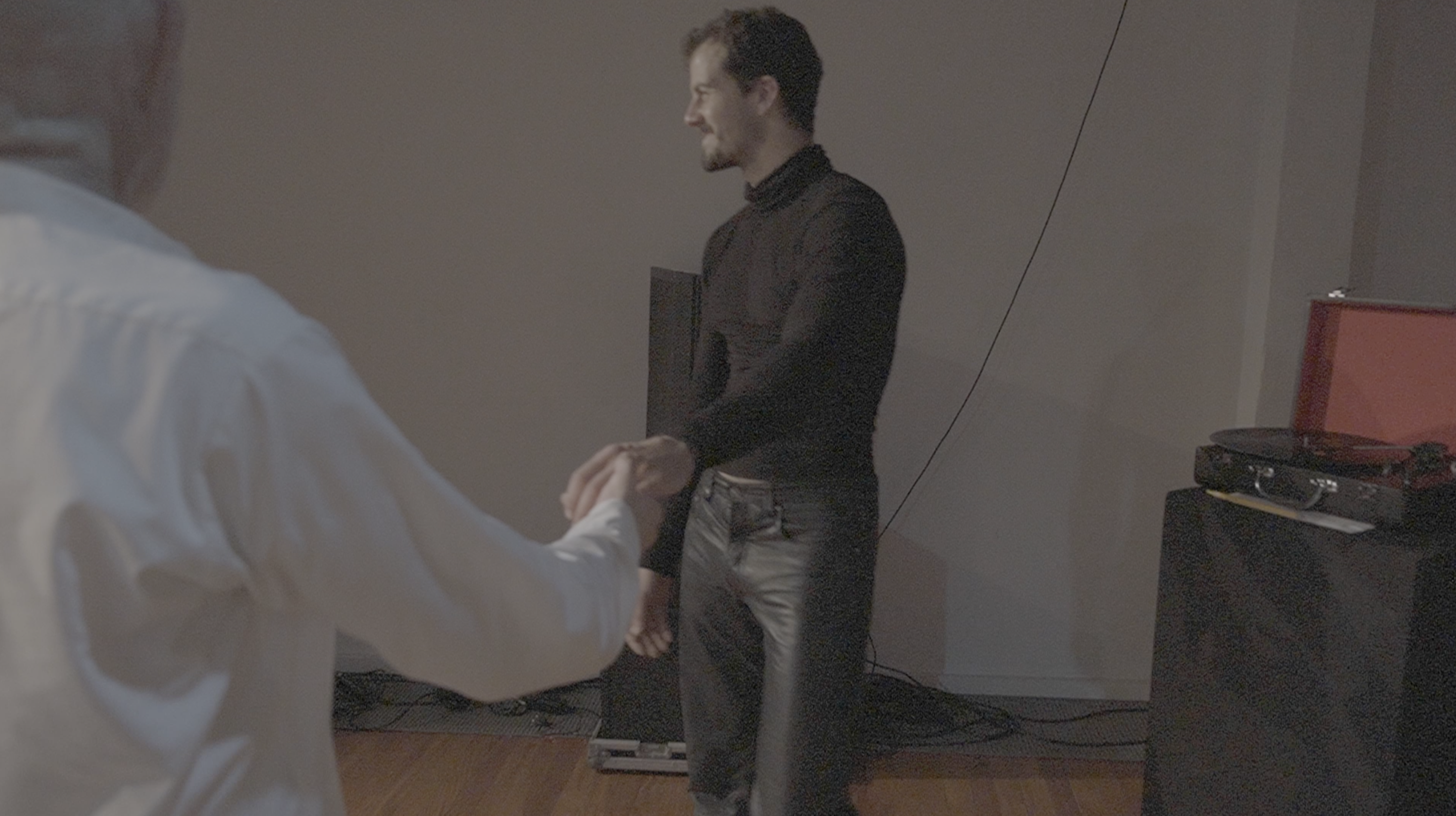
But first and foremost, they were bodies hitting and being hit.
Drawing from influential performance trainers such as Philip Zarrilli, I have previously conceptualised the various layers of embodiment for theatre performers as the terms: Subject and object. The subject is the ‘acting’, semiotic body and the object is the phenomenal body being ‘acted on’. Mortier and Bugge Bang’s rapidity of actions, and sheer physical demand modifies my understanding of these.
In my experience of making and observing theatre, performers’ subject and object embodiments oscillate as they respond to stimuli. They develop impulses toward actions, with such actions being caught, picked up and extended by their interlocutor. Impulse has a long tradition in the working languages of NTL – Barba related impulse in his earlier work to a pre-expressivity and thus the thrust before the action. When making circus performance, Mortier and Bugge Bang’s subject embodiments are secondary. The obstacles of the organism or the object embodiment are centred. Instead, subjectivities exist within the container of the object embodiment, something only developed after repetition and setting the score. This notion of ‘acting’ as a subject seems to be attached to impulse more than the object embodiments, thus leaving impulse to the latter stages of experimentation for the circus body. This new body has an entirely different relationship to signification, and thus the spectator.
This was revealed to me in the first two weeks of Mortier and Bugge Bang’s collaboration on HUMAN CAN: A trick would be discussed and the demands on each performer agreed upon, before being taken up by them. This was quite often balances combined with acrobatics but also included music and dance composition. Tested first and foremost were the limits of the body and the bodies in unison. Once the performers had ‘got it right’ through repetition and spoken guidance, and felt safe, they would extend the sequence through impulses. The sole purpose of the subject embodiment wasn’t to be semiotic or to signify but to mediate the object embodiment. It is a supportive a link between the spectacle of the phenomenal bodies and spectators – not about showing but seeing and breathing.
Not about showing but seeing and breathing.
These key differences in the circus body produced productive tensions between performers and Banke, the latter with whom has an expansive repertoire of theatre performance with NTL and beyond. Despite this, Banke looked at me at one point and said:
‘I have never created work this way before.’
She explained how she usually has performers set the score and the text, learn the text and then rehearse. Yet, she quickly realised how this approach is fundamentally unintelligible to the circus body – in many ways working against it.
The idea of setting a score of course exists in circus dramaturgies, but the score seems to be set for the organism (performer), not the signifier (spectator). The spectator will follow because they are waiting for the impossible to be achieved, and it is after this, the circus performer can access their subjectivity to return to being in the same room as them.
Banke, Mortier and Bugge Bang have developed several strategies for supporting the circus body while interweaving others more familiar to Banke. They have harnessed improvisation across spoken languages in support of the organism, rather than as a guide for it. Banke has also repeatedly left the room so that the performers can focus on scaffolding their sequence, before returning and finding ways of connecting them back to the spectator and the emerging arc of the show. In this way, the team behind HUMAN CAN are not just creating new physical vocabularies but also new working practices for NTL.
These are productive tensions because they concern the very essence of performance and its relationship between bodies. The questioning and augmentation of signification is a priority for post-dramatic theatre, shifting how meaning is made for performers and spectators, and locating who is most prioritised. Mortier and Bugge Bang have made me aware of the opportunities of the circus body. As individual artists with no previous relationship to NTL, new working practices like this a big part of NTL’s future, and a commitment of Artistic Director Per Kap Bech Jensen. Circus and acrobatics have a long history in the theatre, and perhaps it will be in these non-hierarchical practices of negotiation with people of different training backgrounds that will most resonate.
HUMAN CAN premieres at NTL on the 13th of May 2025, Holstebro, Denmark.
© All photos and footage by the author

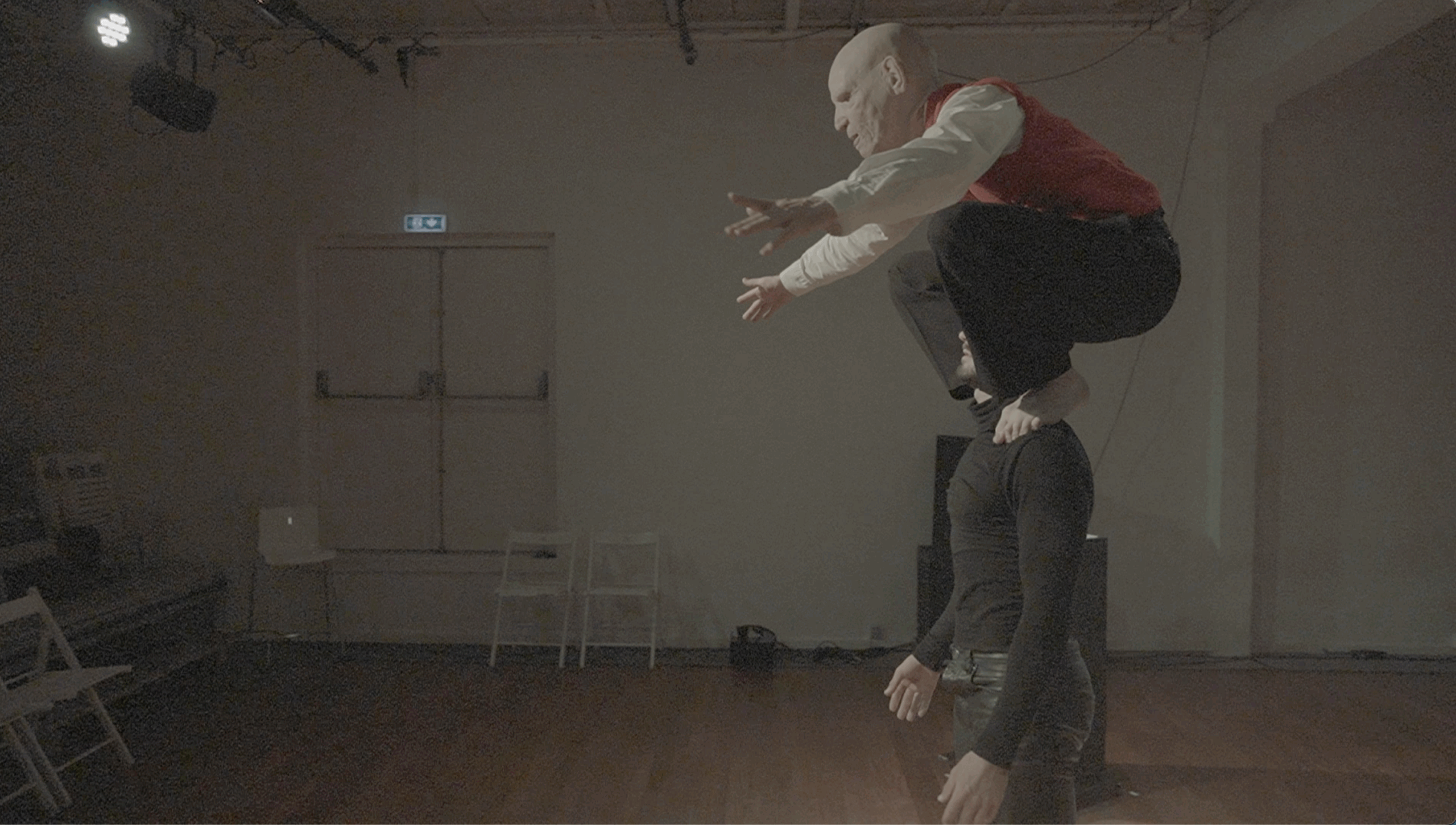

- May 8, 2025
- 0 Comments
- Practice as Research
The circus body
Late in May, we showed the first public reading of my recent play, Courage Songs, at the University of Birmingham’s George Cadbury Hall. The reading aimed to observe the balance of the dialogue and the South Asian musical score. There was a consolidation of these forms and their dramaturgies that persuaded the imaginary for the final draft, now with producers. However, a more surprising outcome was how it opened dialogue with an audience charged with an emphasis on the play’s relatable female, Muslim and South Asian characters.
I reflect on this emphasis in the wider context of facilitating dialogue with global majority audiences.
Courage Songs is a documentary play that I wrote in tribute to five Birmingham-based women and their multiplicities. These women include me – I am written into the script, both as a documentary theatre writer and as a woman with multiplicities.
The play is about ambition and family, love and independence, faith and criticality. The plot reads like this: Five women are drawn together in Sufi Sisters, a Birmingham-based choral project. One of them is an outsider to the Muslim and South Asian majority, two are divorced, all are migrants or daughters of the diaspora. They begin staying back to share memories about songs that have given them courage. As their past lives are imagined and celebrated, they invite us into the discord of the present: Uzma finds new independence as her daughter leaves the nest but doesn’t have a language for it in her relationship. Shalina experiences success in her breathwork career while new caring responsibilities for her mum see her finding it hard to breathe. Ciara’s trying to write an autobiographical play but doesn’t know who her community is. The women learn tolerance and vulnerability as they strive for multiplicity in today’s binary logic.
The reading was made possible with the musicians Oliver Weeks, Deepa Nair Rasiya and Hassan Mohyeddin who wrote the arrangements and performed live alongside the generous support of an ensemble of University of Birmingham student actors, production staff and volunteers. It invited producers of various companies throughout the region, community arts workers, friends and family of the artists and colleagues across departments at the University of Birmingham. We were able to feed our audiences the fine food of Munayam Khan of Raja Monkey and cover the musicians’ time with the support of the Sir Barry Jackson award.
The reading
Programme
Some audience members
The play ran for two hours with a break for lunch/chai in the interval and a question-and-answer session (Q&A) with the audience led by Shalina Litt, one of the women the play is in tribute to.
Litt is a breathwork coach and singer who shared her courage songs and guided decisions on the play’s multiple drafts. Litt and I had agreed that the Q&A would elicit feedback from the audience, rather than from the creative team, and for this reason, I sat in the audience.
Litt’s Q&A largely saw Muslim women coming forward to comment on the work’s relatability. One spoke about the play striking her on a personal level because of how the stories are so similar to the people she knows. Another discussed the relatability of the characters before asking me about my process for making this possible.
I wasn’t quite prepared to be asked questions about the work and tentatively stood from my seat. My answer included being vulnerable, growing friendships, activating close listening and contextual knowledge that accumulates acuity for potential stereotypes. When I sat down, my answer seemed a little short. I didn’t know what else to say – the notion of relatability was such a personal one.
On reflection, I can see that I had many things to say, but was holding off: I held off from discussing the ethical framework for my storytelling with communities, how it nurtures multilingualism and positions myself as a participant. I held off from academic terminology attached to my teaching of applied and documentary theatre. But why I was holding off on my usual articulations of research and practice is something I would like to go further with:
Shalina Litt
Claire French and the audience that stayed for the Q&A
Was I increasing my porous self, as a listener and participant; or was I mute because of not being used to speaking to global majority theatre audiences at this institution?
As an academic, sometimes the intensive processes of supporting and grading students’ performance work see some conflation between academic rules and audience rules for reception. A Q&A at the National Theatre’s Olivier with its middle-class, institutionally educated crowd, may come to suggest that the distance between academic thought and audience thought isn’t too dissimilar. With this in mind, one may make the mistake of speaking to audiences in the theatre in a similar language to those in the university.
At the University of Birmingham theatre department, we were of course positioned at my workplace. Here, amongst other modules, I have taught the ethics of collaboration and representation in applied and documentary theatre. Perhaps, then I was holding off discussing my methodologies because I didn’t want to pretend that this global north, academic language was also a lingua franca for the audience.
This brings me to the racialised and faith-based elephant in the room. In my two years at the University of Birmingham, I hadn’t seen the George Cadbury Hall home to as many Muslims and (particularly female) people of colour as at this reading. Thus, I could have been holding off because of personal inadequacies in communicating to a global majority audience at this institution. My applied theatre projects, after all, happen in small, horizontally led groups, often in the suburbs, and never see me standing at the front of a large group discussing ‘my process’.
Such a reflection reveals a wider passage of knowledge about communicating with global majority audiences more generally.
Perhaps, in future instances like the above example, I could explore communicative practices borrowed from applied theatre projects to challenge artist/audience and knowledge-producer/receiver hierarchies in the theatre.
University of Birmingham
George Cadbury Hall
This way, global majority audiences advance existing frameworks for dialogue emphasising collective approaches to knowledge creation.
For example, Q&As with global majority audiences don’t need to be structured in a top-down formation where the audience stays seated and the artists/knowledge remain on the stage.
Instead, what might happen if we invite audiences onto the stage to provide feedback and be in horizontal dialogue with artists? After all, when one individual is in front of another, it is much easier to find, and elaborate on, an appropriate response.
- July 24, 2024
- 0 Comments
- Writing with communities
Dialogue with global majority audiences: Reflecting on a reading of a recent play
This is a short autobiographical poem that I recently wrote as part of our storytelling process for my upcoming play Courage Songs.
I have a routine to prepare for change.
I turn on all the lamps in the house, put on some music, sit myself on the rug, in front of a window.
Take a duvet and leave it close by, for comfort.
I usually have a film on in the background that I know, and love – something a bit trashy, blooming with positivity, a romance too.
But I never really watch it. I sit there preparing for the storm.
It is like hearing the rain pummel down on a tin ceiling and knowing that you have to eventually walk out into it.
I was in Berlin, and it was 2013.
I have a routine to prepare for change.
I sit by my dog, wishing that I could tell him what was ahead. ‘You are going to be in a small box for 22 hours and then you’ll see me again. You are going to be looked after by a friend for five months while I find a flight for you’.
I didn’t know what was ahead, not really.
I was in Birmingham, and it was 2020.
I have a routine to prepare for change.
I pack up all of my photographs, taking them out of their frames and placing them in an envelope, for new frames.
When I unpack them, I was in Perth, it was 2022.
I had to give my books to charity.
I try not to own books now.
I have a routine for dealing with change.
- November 20, 2023
- 0 Comments
- Practice as Research, Writing with communities
I have a routine to prepare for change
- March 22, 2023
- 0 Comments
- Practice as Research, Writing with communities
Migration and my songs of courage
Location
UK: Ludgate Hill, Birmingham B31DW;
Australia: Mary St, Como 6152
Email me
claire(at)clairefrench.com
+44 (0) 7514 714 414
